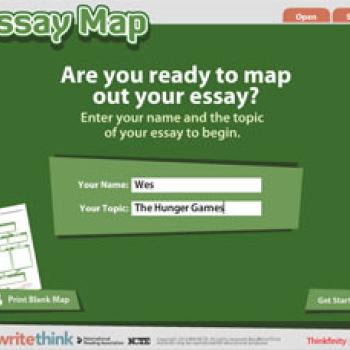Organizing & Summarizing
Essay Map

Grades
3 - 12
About this Interactive
Overview
Expository writing is an increasingly important skill for elementary, middle, and high school students to master. This interactive graphic organizer helps students develop an outline that includes an introductory statement, main ideas they want to discuss or describe, supporting details, and a conclusion that summarizes the main ideas. The tool offers multiple ways to navigate information including a graphic in the upper right-hand corner that allows students to move around the map without having to work in a linear fashion. The finished map can be saved, e-mailed, or printed.